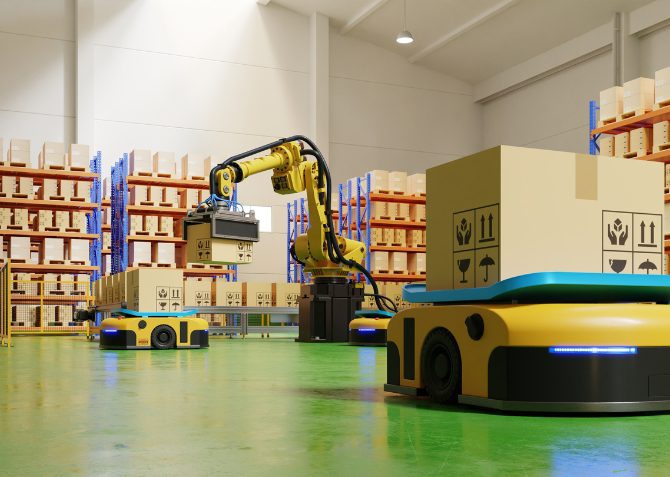
As the Mexican labor force continues to evolve, businesses and logistics professionals should stay informed about current trends and opportunities. This article will delve into the trends in Mexico’s labor market, emphasizing elements that affect trade between the US and Mexico.
We will explore the benefits of nearshoring to Mexico as a result of its competitive workforce, including cost savings and improved supply chain efficiency. Additionally, we’ll discuss challenges faced by shippers and carriers navigating complex cross-border logistics processes.
We will also look at the potential of automation and innovation within the Mexican workforce to boost productivity. Last but not least – we’ll examine future trends in cross-border trade as they relate to ongoing developments in social welfare policies under North American Free Trade Agreement (NAFTA) renegotiations.
Table of Contents:
- Overview of the Mexico Labor Force Dynamics
- Benefits of Nearshoring to Mexico
- Challenges of Cross-Border Logistics
- Opportunities for Automation and Innovation
- Future Trends in Cross-Border Trade
- Conclusion
Overview of the Mexico Labor Force Dynamics
The labor market in Mexico is famous for its size, composition, and growth potential. Boasting a population of over 126 million, Mexico’s labor force is large and diverse. Mexico’s labor force provides the necessary skills to meet the demands of various industries, like transportation and logistics.
In recent years, Mexico has had a considerable rise in its labor pool, which owes to elements like improved and direct access to educational and training opportunities. According to the OECD, the percentage of adults with at least upper secondary education rose from 35% in 2007 to 43% in 2023. This trend has led to an influx of skilled workers entering sectors like transport and logistics.
Mexico’s strategic location also plays a crucial role in shaping its labor dynamics. After all, it shares borders with both North American and Central American countries. This geographical advantage allows businesses operating within the region easy access not only for trade but also to source talent from neighboring countries.
- Economic Growth: The Mexican economy has been growing steadily over the past decade, creating more job opportunities across different sectors.
- Youthful Population: With approximately half of its population under age 29 (World Population Review), Mexico’s labor force offers a young workforce ready for employment opportunities within various industries such as transport and logistics.
- Affordable Labor Costs: Compared to other developed economies like the USA or Canada, labor costs are significantly lower in Mexico.

Mexico labor force offers a young workforce ready for employment opportunities within various industries such as transport and logistics.
Despite these advantages, Mexico’s labor force still faces challenges like a high unemployment rate and a large informal sector. The International Labour Organization highlights that the 2023 unemployment rate in Mexico is 4.4%. Additionally, a significant portion of the Mexican workforce operates in the informal sector, which lacks social welfare protections and benefits.
Benefits of Nearshoring to Mexico
As American companies seek ways to optimize their supply chains and reduce costs, nearshoring manufacturing across Mexico has become an increasingly attractive option. Why? Well, one significant advantage is the proximity between the US and Mexico, which facilitates shorter lead times, faster delivery of goods, and more efficient communication with suppliers.
Mexico’s competitive workforce offers another benefit for businesses looking to move nearshore. With a skilled workforce that boasts lower wages compared to the US, companies can achieve substantial cost savings without sacrificing quality or productivity. And since the transportation infrastructure is robust, shipping products across the border continues to be relatively seamless.
On top of these logistical advantages, nearshoring allows businesses to capitalize on favorable trade policies such as the USA-Mexico-Canada Agreement (USMCA).

American companies can improve their competitiveness with the help of regional trade agreements such as the USMCA.
Cross-border commerce is enabled by the USMCA, which cuts out tariffs on a wide range of items and services exchanged between member countries. In 2023, it makes perfect sense to take advantage of these benefits offered by proximity and trade agreements like the USMCA. Predominantly, it allows American companies to improve their competitiveness while streamlining operations. The supply of the transport sector has a natural counterpart in its demand by other industries. In layman’s words, it plays a strategic and irreplaceable role in the economy.
Challenges of Cross-Border Logistics
Cross-border logistics can be difficult for businesses, shippers, and carriers due to the complexities of US-Mexico customs regulations. For instance, one of the major obstacles is navigating the complex customs regulations and procedures on both sides of the border. While it can be a lengthy and expensive process, the burden of responsibility lies on firms to guarantee and adhere to all import/export laws.
Beyond customs compliance, security concerns are another major issue in cross-border logistics. Cargo theft has become a persistent and common issue in Mexico. Consequently, it is essential for companies to invest in robust security measures such as advanced GPS tracking systems or professional armed escorts to protect their shipments.
- Infrastructure limitations: In some areas along the border, inadequate road infrastructure often leads to delays and increased transportation costs.
- Cultural differences: When dealing with Mexican partners or suppliers, it is crucial to understand local business practices and cultural nuances.
- Labor force dynamics: Since the availability of skilled labor varies across regions in Mexico, companies should carefully assess workforce capabilities before selecting a location for nearshoring operations.

Partnering with an experienced logistics provider can help you streamline supply chain management processes.
To overcome these challenges, partnering with an experienced logistics provider like ILS Company, which specializes in cross-border operations between Mexico and the USA, can streamline supply chain management processes. It also ensures regulatory compliance and minimizes the risks associated with cargo transportation across borders.
Opportunities for Automation and Innovation
In Mexico’s transport and logistics sector, automation and innovation present a range of possibilities for improving efficiency and streamlining operations. One of the most promising areas is robotics, which can help reduce labor costs, increase productivity, and enhance safety.
Currently, companies want to focus on an ideal profile that can adapt to new changes. So, when dealing with constant change, how does this move work?
Whether it’s logistics, automotive, or construction, there’s been a significant impact across these industries. For instance, the logistics industry continues to thrive due to the rise of e-Commerce. In fact, there are more last-mile deliveries than ever. Also, there is a high demand for operational managers who can create dedicated strategies to minimize delivery times.
- Automated Guided Vehicles (AGVs): These vehicles can navigate autonomously within warehouses or distribution centers using sensors, cameras, or lasers. AGVs enable faster movement of goods while reducing manual labor requirements.
- Drones: Drones have great potential in inventory management by conducting aerial scans of warehouse shelves to track stock levels accurately. Companies can also use this technology for last-mile delivery in urban areas where traffic congestion is a challenge.
- Cobots: Collaborative robots, or “cobots,” work alongside human workers to perform tasks like picking items from shelves or packing boxes. Cobots not only increase efficiency but also ensure worker safety. How? Cobots take over repetitive tasks that may cause injury over time.

Automated Guided Vehicles (AGVs) can navigate autonomously within warehouses or distribution centers to move pallets with merchandise
Apart from robots, innovative software solutions like advanced analytics tools (TMS) can optimize route planning based on real-time data about traffic conditions, weather patterns, fuel prices, etc. In the long run, this ultimately saves a lot of time and resources. Blockchain technology has immense potential for improving transparency across the supply chain by securely tracking every transaction involved during transportation processes.
Conversely, Mexico has recognized the importance of infrastructure development to support its logistics industry. The government has heavily invested in transportation networks, including roads, railways, and ports. Projects like the New International Airport in Mexico City and the expansion of the ports of Veracruz and Lázaro Cárdenas have improved interconnectivity and increased the capacity to handle goods. In a broad sense, this further strengthens Mexico’s logistics capabilities.
5. Future Trends in Cross-Border Trade
Since global trade practices continue to change and evolve, businesses in the US-Mexico area should be conscious of advancing patterns and their consequences for cross-border activities. One major development is the USA-Mexico-Canada Agreement (USMCA). It replaced NAFTA and introduced new provisions that affect various industries.
- Digitalization: The increasing use of digital technologies has led to a more efficient exchange of information between shippers, carriers, and customs authorities. This trend can help streamline border processes while reducing costs associated with paperwork and manual data entry.
- E-commerce growth: As the rapid expansion of e-Commerce continues, companies will need to adopt modern logistics strategies. The rise in online shopping has resulted in higher demand for fast delivery services across borders. This makes it essential for businesses to optimize their supply chain management.
- Sustainability initiatives: Growing concerns about climate change have propelled governments across the world to implement stricter environmental regulations that impact transportation practices. Companies may need to invest in greener alternatives, like electric vehicles. Similarly, companies can partner with eco-friendly carriers that prioritize sustainability efforts.

The USMCA (United States-Mexico-Canada Agreement) has been designed to modernize and replace the North American Free Trade Agreement (NAFTA).
Ongoing changes could also influence future opportunities for both local workers and international companies seeking cost-effective solutions for nearshore manufacturing operations. The informal sector and unemployment rate are important factors. And that’s because these factors can affect overall productivity levels within the transport and logistics sector. Businesses should stay informed about these developments to make strategic decisions that support their long-term growth objectives.
Conclusion
Understanding Mexico’s labor force dynamics is crucial for businesses looking to transport merchandise between the USA and Mexico. As the country continues to invest in infrastructure development and digital transformation, there is an increasing demand for skilled professionals across the transportation spectrum.
Moreover, this demand opens doors for career advancement, entrepreneurial ventures, and international collaboration. The integration of AI, automation, and sustainable practices within the industry also creates avenues for innovation and environmental stewardship. Ultimately, it will attract more professionals that want to make a positive impact.
Despite many challenges, opportunities for automation and innovation in cross-border trade are emerging. Future trends in the realm of cross-border trade are beginning to include more reliance on technology for supply chain operations and an expansion of online shopping. As businesses navigate the complexities of cross-border trade with Mexico, it is important to partner with experienced logistics providers like ILS Company that can provide tailored solutions and meet your unique needs. Don’t hesitate and get in touch with us today!


